library(palmerpenguins)
penguins <- penguins %>%
na.omit() # 11 observations
# out of 344 removed, use only
# vars of interest, and standardise
# them for easier interpretation
penguins_sub <- penguins[,c(1, 3:6)] %>%
mutate(
across(where(is.numeric), ~ scale(.)[,1])) %>%
rename(bl = bill_length_mm,
bd = bill_depth_mm,
fl = flipper_length_mm,
bm = body_mass_g)Visually exploring local explanations to understand complex machine learning models
Professor Di Cook
Econometrics and Business Statistics
Monash University
Outline
- Example data: penguins
- Non-linear model
- Local explanations
- Radial tour, focus on single observation
Palmer penguins

Examine the penguins using a tour
Grand tour: randomly selecting target planes
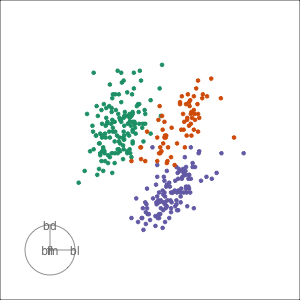
Adelie
Chinstrap
Gentoo
Examine the penguins using a tour
Grand tour: randomly selecting target planes
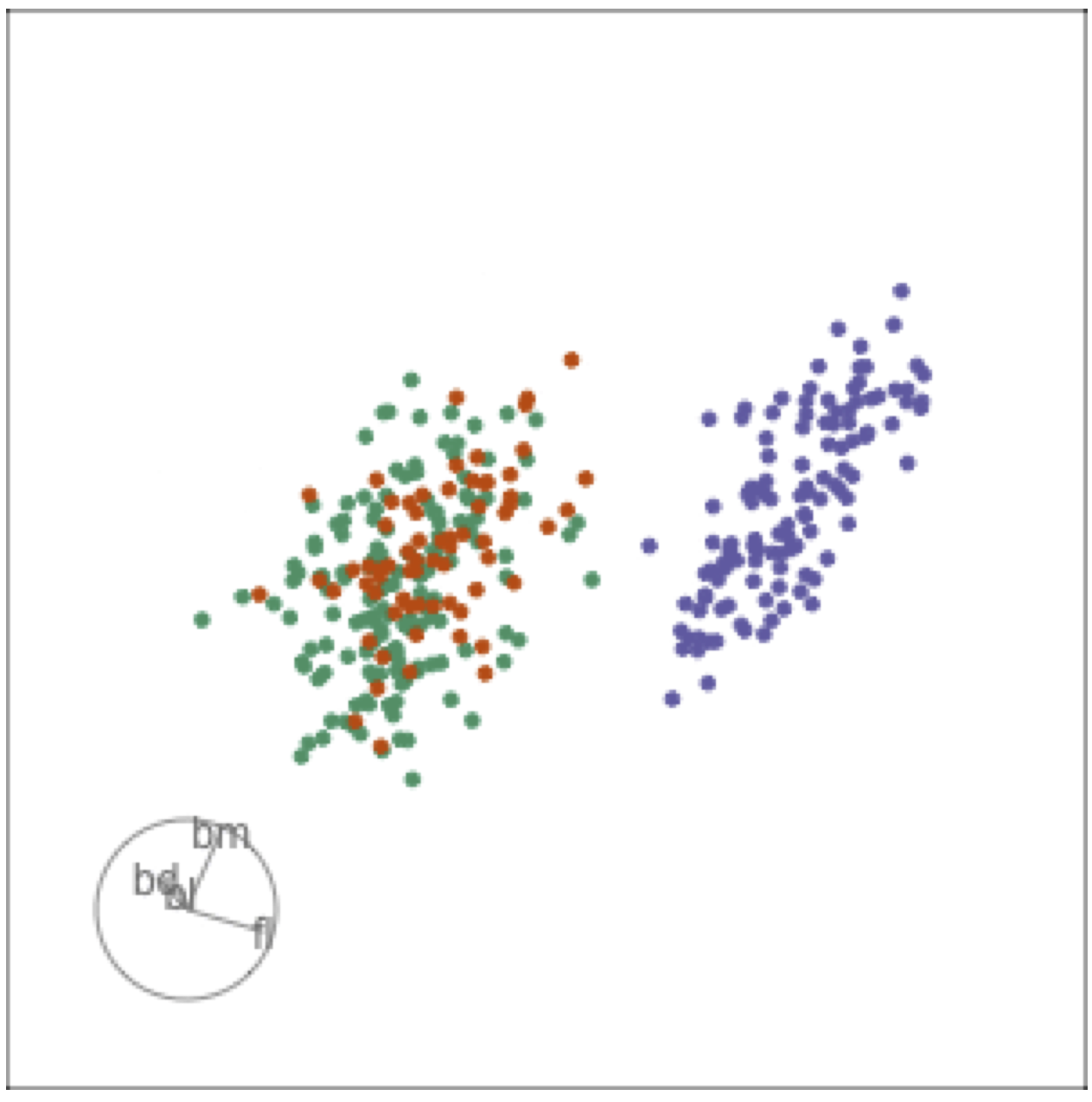
Guided tour: target planes chosen to best separate classes
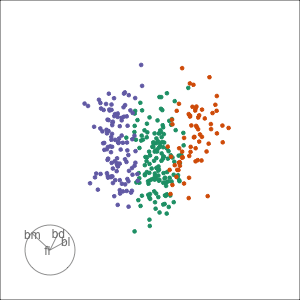
Tour projections are biplots
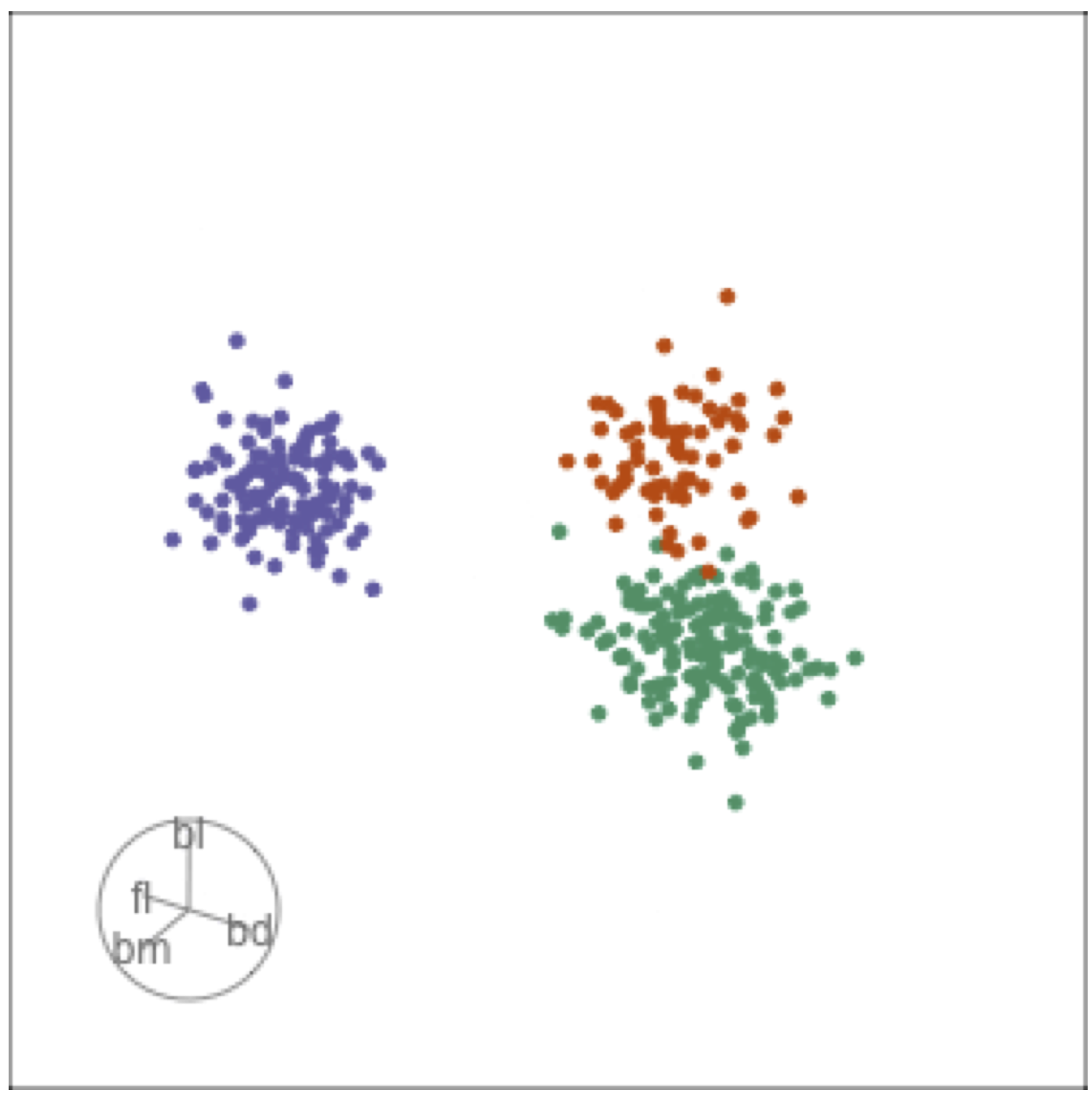
bd and bm distinguish Gentoo

Tour projections are biplots

bd and fl also distinguish Gentoo

Tour projections are biplots

bd and bl distinguish Chinstrap from Adelie

Fit a classification model
#>
#> Call:
#> randomForest(formula = species ~ ., data = penguins_sub, ntree = 1000, importance = TRUE)
#> Type of random forest: classification
#> Number of trees: 1000
#> No. of variables tried at each split: 2
#>
#> OOB estimate of error rate: 2.4%
#> Confusion matrix:
#> Adelie Chinstrap Gentoo class.error
#> Adelie 143 2 1 0.0205
#> Chinstrap 4 64 0 0.0588
#> Gentoo 0 1 118 0.0084Variable importance (globally)
#> Adelie Chinstrap Gentoo MeanDecreaseAccuracy MeanDecreaseGini
#> bl 0.453 0.38 0.088 0.306 86
#> bd 0.080 0.13 0.304 0.170 38
#> fl 0.131 0.13 0.345 0.206 71
#> bm 0.016 0.13 0.152 0.088 17Globally, bl, fl are most important, and to a lesser extent, bd and even lesser extent bm.

Variable importance (by class)
#> Adelie Chinstrap Gentoo MeanDecreaseAccuracy MeanDecreaseGini
#> bl 0.453 0.38 0.088 0.306 86
#> bd 0.080 0.13 0.304 0.170 38
#> fl 0.131 0.13 0.345 0.206 71
#> bm 0.016 0.13 0.152 0.088 17


Radial tours: bd is very important
A radial tour changes the contribution for one variable, reducing it to 0, and then back to original.
At right, coefficient for bd is being changed.
When it is 0, gap between Gentoo and others is smaller, implying that bd is very important.
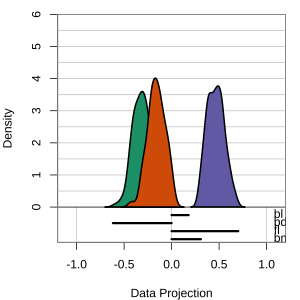
but bl is less important
At right, the small contribution for bl is reduced to zero, which does not change the gap between Gentoo and others.
Thus bl can be removed from the projection, to make a simpler but equally effective combination of variables.
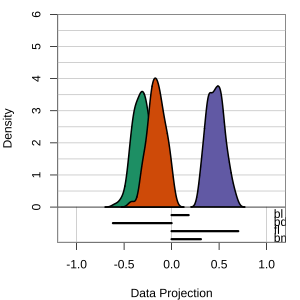
Local explanations
Explainable Artificial Intelligence (XAI) is an emerging field of research that provides methods for the interpreting of black box models1.
A common approach is to use local explanations, which attempt to approximate linear variable importance in the neighbourhood each observation.
Fitted model may be highly nonlinear. Overall linear projection will not accurately represent the fit in all subspaces.
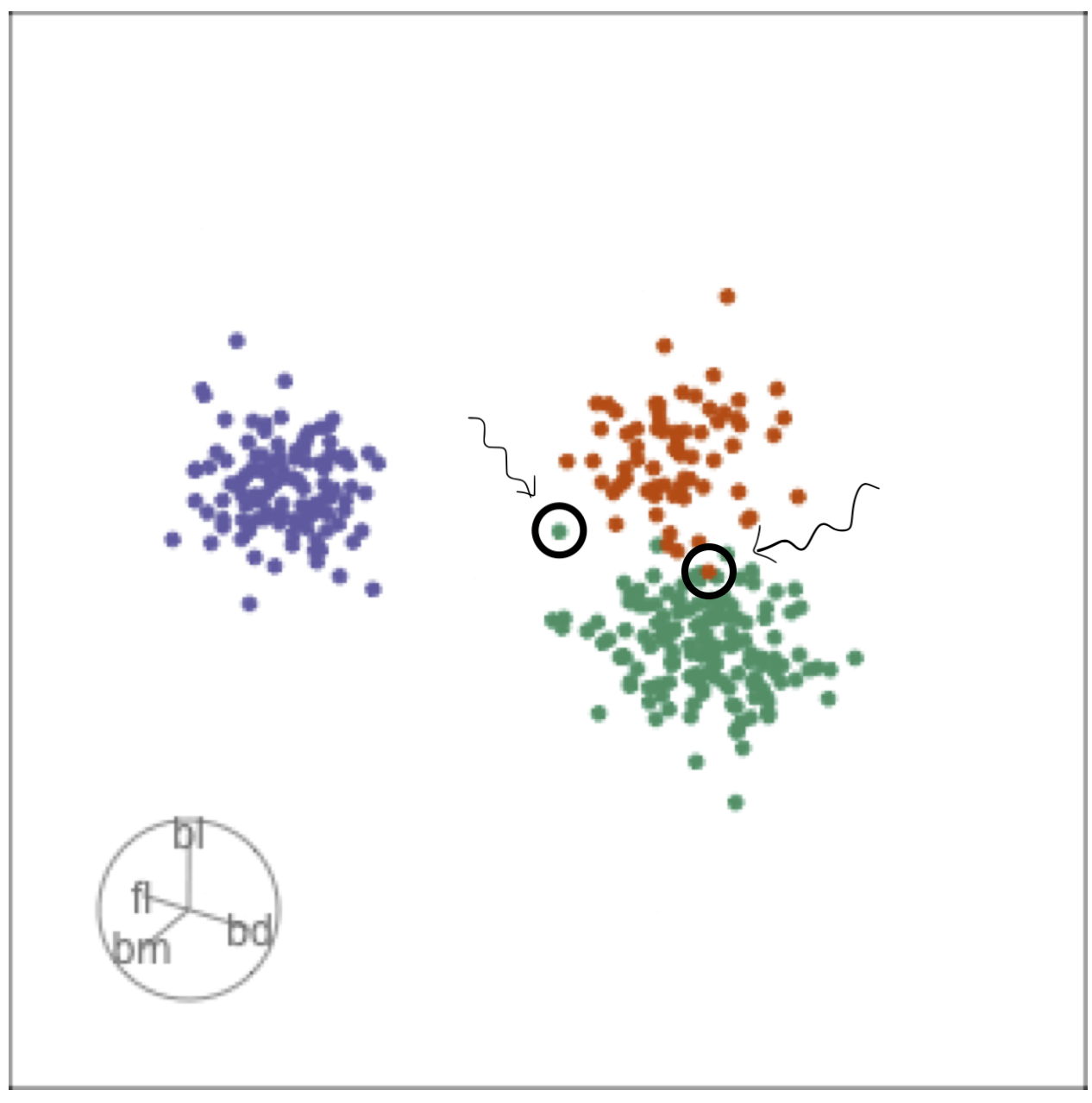
Compute SHAP values
Each observation has a variable importance, computed using the SHAP method, see Molnar (2022) Interpretable Machine Learning.
Comparing all local explanations

SHAP examines predictions while varying one variable and holding others fixed at mean.
Observations with different local explanations from the rest of their group are likely the misclassified cases.
And from the parallel coordinate plot can be seen which variables are most contributing to this.
Using R package cheem
Gentoo penguin, mistaken as a Chinstrap, model used small component of fl, unlike the other Gentoo but more like the bulk of the Chinstrap penguins. That was a mistake!
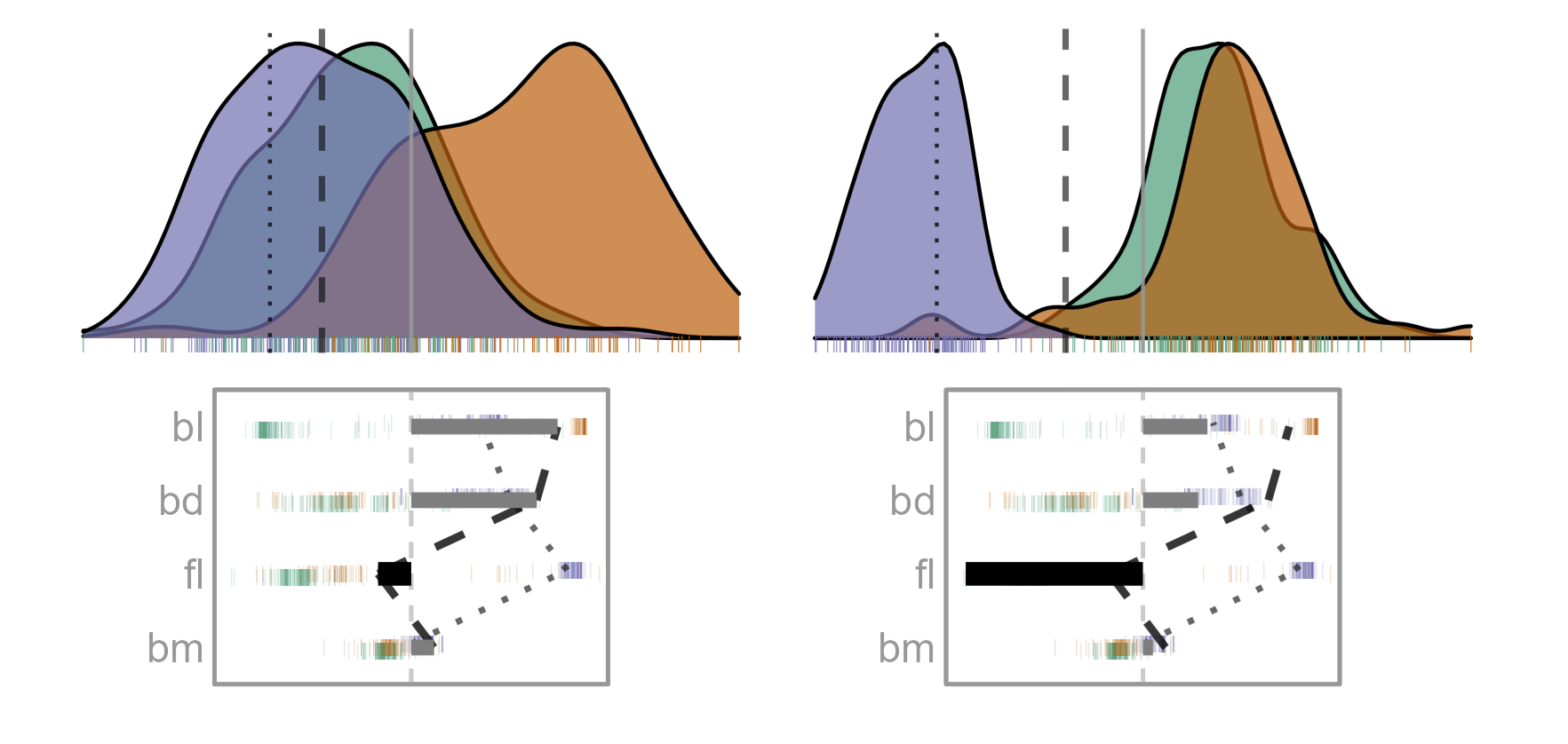
What we learn

With fl it looks more like a Chinstrap.

With only bl and bd it looks like it’s own species.
Summary
- Local explanations tell us how a prediction is constructed, for any observation.
- User-controlled, interactive radial tours are useful to check the local explanations, and better understand a model fit in local neighbourhoods.
Further reading
This work is based on Nick Spyrison’s PhD research, developed after discussions with Przemyslaw Biecek.
- Spyrison, Cook, Biecek (2022) Exploring Local Explanations of Nonlinear Models Using Animated Linear Projections
- R package: cheem and shiny app for experimenting.
- Wickham, Cook, Hofmann (2015) Visualizing statistical models: Removing the blindfold.
Acknowledgements
Slides produced using quarto.
Slides available from https://github.com/dicook/ASC_2023.
Viewable at https://github.com/dicook/ASC_2023/slides.html.